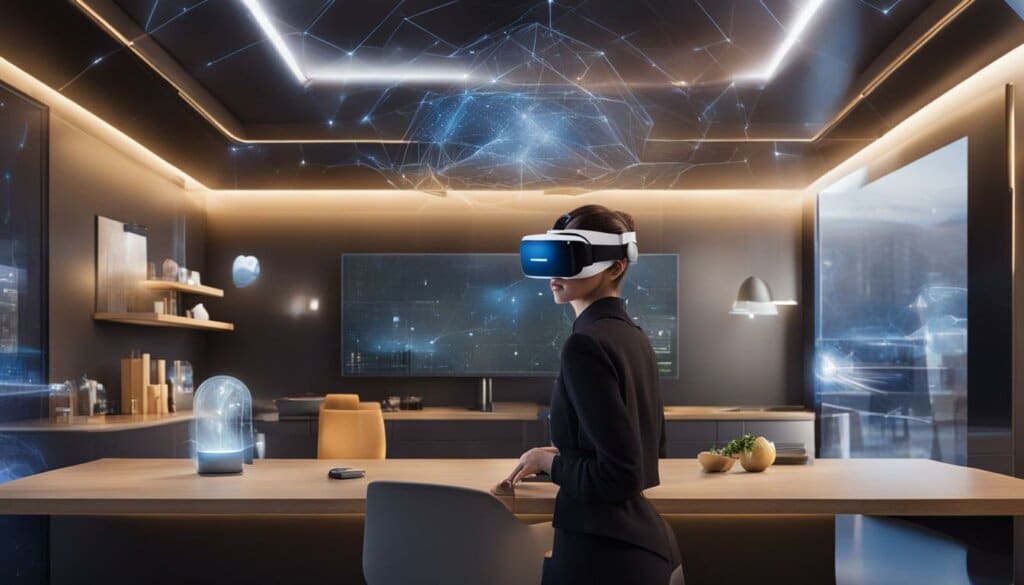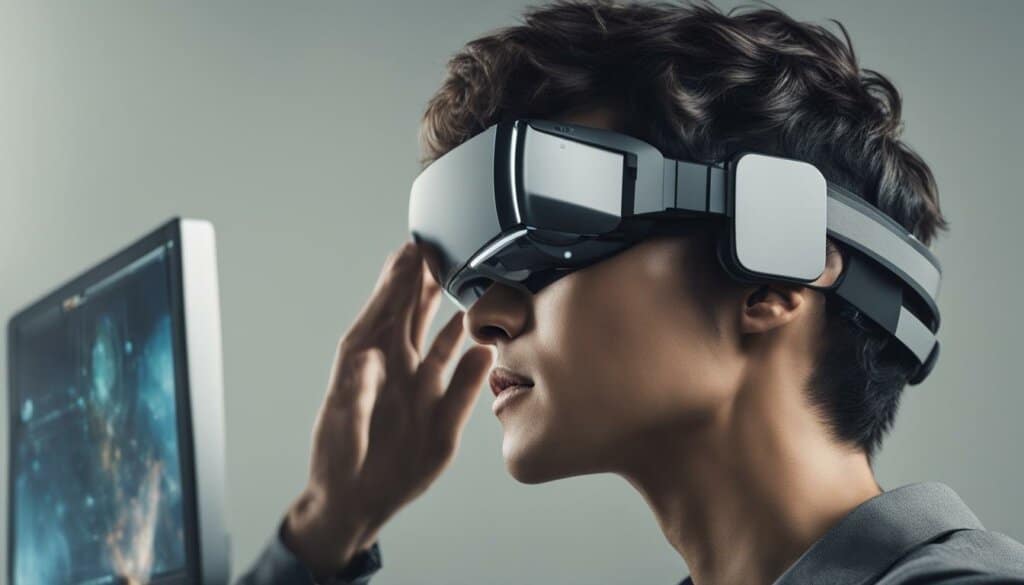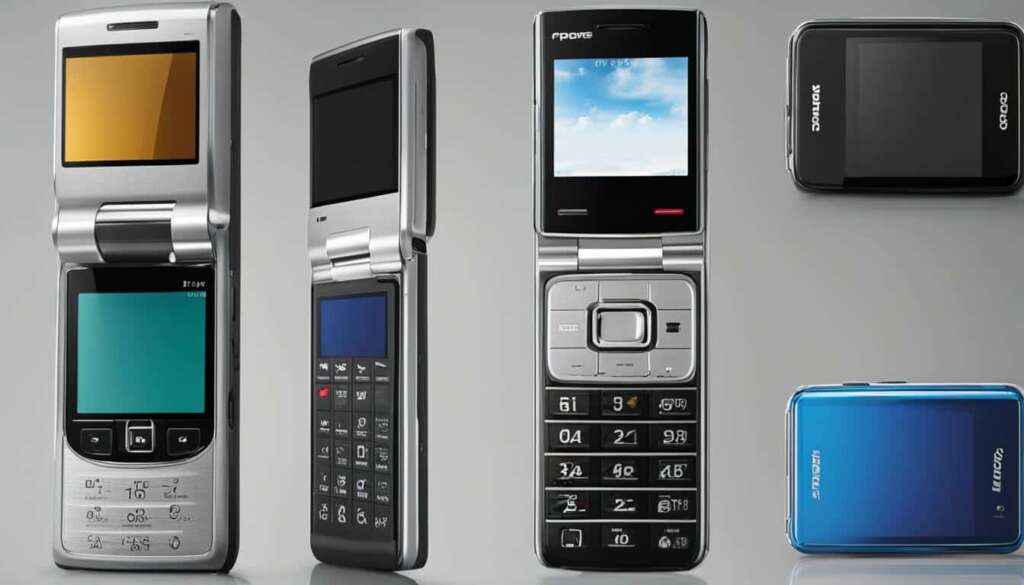Table of Contents
Welcome to the exciting world of Human-Computer Interaction (HCI), a multidisciplinary field that explores how people interact with technology. In this article, we will dive into the latest trends in HCI, including user interface design, user experience, usability testing, interaction design, information visualization, cognitive psychology, user-centered design, and user research.
But first, let’s take a moment to appreciate the impact of HCI on our daily lives. From the moment we wake up and check our smartphones to the intuitive interfaces of our smart home devices, HCI is everywhere. It combines computer science, psychology, design, and engineering to create positive user experiences that are engaging, efficient, and satisfying.
To grasp the current trends in HCI, we need to explore various aspects of this field. We will discuss the importance of user experience (UX) and its influence on design decisions. We will delve into the world of interaction techniques and discover how they enable natural and intuitive communication between users and technology. We will also explore the role of artificial intelligence (AI) in HCI and its potential to revolutionize our interactions with technology.
Furthermore, we will examine the significance of user diversity and how inclusive design can accommodate diverse needs and preferences. We will also address the societal impact of HCI and the ethical considerations that need to be taken into account.
Throughout this article, we will highlight the advantages and disadvantages of specific HCI techniques, such as hand gesture recognition and gaze gesture, and discuss their practical applications in real-time scenarios.
By the end of this reading, you will have a deeper understanding of the latest trends in HCI and how they shape our digital experiences. So, let’s embark on this fascinating journey and explore the ever-evolving world of HCI together!
User Experience (UX)
User experience (UX) is a critical aspect of human-computer interaction (HCI) that focuses on creating positive and meaningful interactions between users and technology. It encompasses usability, functionality, emotions, aesthetics, and social aspects of interaction. To provide users with a seamless and engaging experience, UX professionals employ various techniques and principles, including personalization, gamification, accessibility, and ethical design.
Personalization is a key trend in UX, as it allows technology to adapt to individual users’ preferences and needs. By tailoring the user interface and content to match specific user characteristics, such as previous interactions or location, personalization enhances the user’s sense of relevance and satisfaction. This approach promotes a more engaging and personalized experience, resulting in increased user satisfaction and loyalty.
Gamification is another popular trend in UX, incorporating game elements and mechanics into non-game contexts. By introducing challenges, rewards, and a sense of achievement, gamification motivates users to engage with technology and complete desired tasks. This approach can be particularly effective in promoting user engagement, enhancing motivation, and fostering a positive user experience.
Usability Testing
Accessibility is a crucial aspect of UX, ensuring that technology is usable and inclusive for all users, regardless of their physical or cognitive abilities. Designing for accessibility involves considering factors such as screen readers, keyboard navigation, color contrast, and alternative text for images. By making technology accessible to a wider audience, UX professionals promote inclusivity and equality.
Ethical design is also gaining importance in UX, as it focuses on creating technology that respects user privacy, security, and rights. UX professionals strive to design interfaces that are transparent, trustworthy, and do not manipulate or exploit users. By embracing ethical design principles, developers contribute to a more responsible and user-centric digital environment.
| Trends in UX | Description |
|---|---|
| Personalization | Adapting technology to individual user preferences and needs |
| Gamification | Incorporating game elements to enhance user engagement and motivation |
| Accessibility | Making technology usable and inclusive for all users |
| Ethical Design | Creating technology that respects user privacy, security, and rights |
By focusing on user experience and adopting these trends in UX, developers and designers can create technology that not only meets users’ needs but also delights and engages them. As technology continues to evolve, the importance of UX in shaping positive and meaningful human-computer interactions will only continue to grow.
Interaction Techniques
Interaction techniques are a crucial aspect of human-computer interaction (HCI) that enable seamless communication between users and technology. These techniques encompass both input and output devices, facilitating natural and intuitive interactions. Here, we explore some current trends in interaction techniques that are shaping the future of HCI.
Multimodal Interaction
Multimodal interaction involves the use of multiple modalities, such as touch, voice, and gestures, to interact with technology. It enhances user experiences by providing flexibility and adaptability, catering to individual preferences and abilities. For example, a user might use a combination of touch and voice commands to navigate a smart speaker or a smartphone. Multimodal interaction is rapidly evolving and holds great potential for creating more inclusive and engaging interfaces.
Brain-Computer Interfaces
Brain-computer interfaces (BCIs) enable direct communication between the human brain and technology. These interfaces use neural signals to control devices, allowing users to interact without the need for physical input devices. BCIs have applications in medical fields, such as assistive technology for individuals with disabilities, as well as in gaming and virtual reality. Ongoing research aims to improve the accuracy and usability of BCIs, making them more accessible and practical for everyday use.
Tangible Interaction
Tangible interaction involves the use of physical objects or interfaces to interact with technology. It bridges the gap between the digital and physical realms, providing a tangible and immersive experience. For example, interactive tabletops or tangible user interfaces allow users to manipulate physical objects to control digital content. Tangible interaction can enhance learning, collaboration, and creativity, offering a more intuitive and engaging way to interact with technology.
| Interaction Technique | Definition | Example |
|---|---|---|
| Multimodal Interaction | Use of multiple modalities to interact with technology | Using gestures and voice commands to control a smart speaker |
| Brain-Computer Interfaces | Direct communication between the human brain and technology | Controlling a wheelchair using brain signals |
| Tangible Interaction | Use of physical objects or interfaces to interact with technology | Manipulating physical objects on an interactive tabletop |
These current trends in interaction techniques demonstrate the ongoing efforts to create more intuitive, immersive, and inclusive interfaces. As technology continues to advance, HCI will continue to evolve, enabling seamless and natural interactions between humans and computers.
Artificial Intelligence (AI)
Artificial Intelligence (AI) is a rapidly advancing field in Human-Computer Interaction (HCI) that has the potential to revolutionize the way we interact with technology. AI enables machines to perform tasks that typically require human intelligence, such as understanding natural language, recognizing patterns, and making decisions. In HCI, AI is leveraged to create intelligent feedback systems, conversational agents, and social robots.
Intelligent feedback systems use AI algorithms to adapt to users’ preferences and provide personalized recommendations or suggestions. This helps enhance the user experience by tailoring the interaction to individual needs. Conversational agents, also known as chatbots, employ AI to simulate human-like conversations and assist users in various tasks. They can understand user queries, provide information, and even perform actions on behalf of the user.
“AI enables machines to simulate human intelligence, creating intelligent feedback systems, conversational agents, and social robots for enhanced user experiences.”
Another exciting application of AI in HCI is in the development of social robots. These robots are designed to interact with humans in a social and emotional manner, providing companionship, assistance, and entertainment. They use AI algorithms to recognize facial expressions, understand emotions, and respond accordingly, creating a more engaging and personalized interaction.
Table: Applications of AI in HCI
| Application | Description |
|---|---|
| Intelligent feedback systems | Adapt to user preferences and provide personalized recommendations. |
| Conversational agents | Simulate human-like conversations, assist users, and perform tasks. |
| Social robots | Interact with humans in a social and emotional manner, providing companionship and assistance. |

As AI continues to advance, HCI researchers and designers are exploring new ways to harness its potential for creating more intuitive, efficient, and engaging user experiences. However, it is essential to ensure that AI systems are explainable and transparent to users. Explainable AI refers to the ability of AI systems to provide understandable explanations for their actions and decisions, enhancing trust and accountability.
Overall, AI is a powerful tool in HCI that enables technology to adapt to users’ needs, provide intelligent feedback, and create new forms of interaction. It opens up exciting possibilities for the future of human-computer interaction, making technology more accessible, personalized, and socially engaging.
User Diversity
User diversity is a crucial consideration in the field of human-computer interaction (HCI). It refers to the wide range of characteristics, backgrounds, and preferences of technology users. Acknowledging and accommodating these diversities is essential for creating inclusive and effective designs that cater to the needs of all users.
Inclusive design is an approach that aims to ensure that products and services are accessible and usable by people with diverse abilities, including those with physical, cognitive, and sensory impairments. By adopting inclusive design principles, HCI professionals can create interfaces that accommodate different users’ needs, providing equal access to technology and promoting digital inclusivity.
Cross-cultural design is another aspect of user diversity that HCI considers. It focuses on understanding and adapting to the cultural differences in user preferences, behaviors, and expectations. By incorporating cultural context and values into the design process, HCI professionals can create interfaces that resonate with users from different cultural backgrounds, enhancing user satisfaction and engagement.
Gender-sensitive design is a growing area of focus in HCI. It recognizes that gender is a social construct that influences individuals’ experiences, behaviors, and expectations. HCI professionals strive to create interfaces that avoid reinforcing gender stereotypes and biases. By considering the diverse gender identities and experiences of users, designers can create inclusive and empowering interfaces that cater to a broader range of users.
| Benefits of User Diversity Consideration in HCI | Challenges of User Diversity Consideration in HCI |
|---|---|
|
|
Key Takeaways
- User diversity is essential in HCI to create inclusive designs that cater to the needs of all users.
- Inclusive design focuses on accessibility and usability for people with diverse abilities.
- Cross-cultural design considers cultural differences in user preferences and behaviors.
- Gender-sensitive design aims to avoid reinforcing gender stereotypes and biases.
By considering user diversity, HCI professionals can create interfaces that are accessible, usable, and engaging for a wide range of users, promoting digital inclusivity and enhancing user experiences.
Societal Impact
HCI has far-reaching implications for society, touching upon various aspects such as privacy, security, ethics, sustainability, social justice, digital citizenship, data literacy, and responsible innovation. As technology becomes more intertwined with our daily lives, it becomes crucial to consider the societal impact of HCI and ensure that it aligns with our values and goals.
One of the key concerns in HCI is privacy. With the increasing collection and analysis of user data, it is important to establish robust privacy frameworks that protect personal information and give users control over their data. Additionally, security measures need to be implemented to safeguard against cyber threats and data breaches, as HCI often involves sensitive information.
“Technology offers immense potential for positive change, but we must navigate ethical considerations to ensure that it serves the greater good.”
Ethics play a vital role in HCI, as technological advances can have unintended consequences. Responsible innovation entails considering the ethical implications of new technologies and ensuring that they do not perpetuate discriminatory practices or harm vulnerable populations. HCI also has a role in promoting social justice by addressing biases and inequalities in the design and deployment of technology.
Sustainability is another crucial aspect of HCI. As the environmental impact of technology continues to grow, HCI can contribute by designing products and services that are energy-efficient and environmentally friendly. Furthermore, digital citizenship and data literacy are important in fostering responsible use of technology and empowering individuals to navigate the digital landscape with awareness and critical thinking.
The societal impact of HCI is vast and multifaceted. By considering the principles of privacy, security, ethics, sustainability, social justice, digital citizenship, data literacy, and responsible innovation, HCI can drive positive change and create a more inclusive and equitable digital future.
Hand Gesture Recognition for HCI
Hand gesture recognition is a fascinating interface design that enhances natural and intuitive interaction with technology. By using hand gestures, users can navigate, control, and communicate with devices effortlessly. This technology relies on the use of infrared sensors to capture and interpret the movements of the hands, enabling a wide range of practical applications in various domains of human-computer interaction (HCI).
One of the key advantages of hand gesture recognition is its ability to provide a more natural and immersive user experience. Instead of relying solely on physical input devices like keyboards or touchscreens, users can interact with technology using hand movements that mimic real-world actions. This natural interaction paradigm can lead to increased engagement, ease of use, and user satisfaction.
Practical applications of hand gesture recognition in HCI are diverse and expanding rapidly. In the gaming industry, hand gestures enable players to control characters and perform actions in a more intuitive and immersive way. In the healthcare sector, hand gestures can be used in surgical simulations or rehabilitation programs, allowing healthcare professionals and patients to interact with virtual environments. Additionally, hand gesture recognition is valuable in smart devices with limited physical interfaces, such as smartwatches and small smart mobile devices.
| Advantages of Hand Gesture Recognition for HCI | Disadvantages of Hand Gesture Recognition for HCI |
|---|---|
|
|
In summary, hand gesture recognition offers a promising interface technology for HCI, enabling natural and intuitive interaction with technology. Its practical applications are expanding across different industries, providing users with more engaging and immersive experiences. However, it is important to acknowledge the limitations and challenges associated with hand gesture recognition, such as accuracy and environmental interference. With ongoing research and advancements in the field, hand gesture recognition has the potential to revolutionize the way we interact with technology.

Gaze Gesture for HCI with Head-Mounted Displays
The advancement of head-mounted displays (HMDs) has opened up new possibilities for interactive experiences in human-computer interaction (HCI). Gaze gesture, enabled by eye-tracking technology, has emerged as a highly intuitive and efficient interface for HMDs, particularly in augmented reality (AR) and virtual reality (VR) environments. This technology allows users to interact with virtual objects and interfaces simply by directing their gaze towards them.
Gaze gesture offers several advantages in HCI with head-mounted displays. It provides a hands-free interface, making it ideal for situations where users’ hands are occupied or when verbal commands are not practical. The accuracy of eye-tracking technology ensures precise interaction, allowing users to easily select and manipulate virtual objects with their gaze. Moreover, gaze gesture is highly adaptable to different lighting conditions, making it suitable for various real-world scenarios.
One of the most promising applications of gaze gesture in HCI is the interface for disabled individuals. By leveraging eye-tracking technology, individuals with limited mobility can navigate digital environments, communicate, and interact with technology using their gaze. This not only enhances their independence and quality of life but also opens up new opportunities for social interaction and participation.
| Advantages of Gaze Gesture for HCI with Head-Mounted Displays |
|---|
| Hands-free interaction |
| Precise and accurate selection |
| Adaptability to different lighting conditions |
| Interface for disabled individuals |
Advancements in neural networks have further enhanced the accuracy and reliability of gaze gesture recognition. These networks are trained to analyze eye movements and patterns, allowing for more robust and precise interaction. With ongoing research and development, gaze gesture has the potential to become a mainstream interface for HCI, revolutionizing the way we interact with virtual environments and digital interfaces.

Advantages and Disadvantages of Hand Gesture Recognition for HCI
Hand gesture recognition offers several advantages for HCI. First and foremost, it enables intuitive and natural interaction between users and technology. By relying on hand movements, users can navigate interfaces, control devices, and perform actions effortlessly. This enhances the overall user experience and eliminates the need for physical input devices such as keyboards or touchscreens. Additionally, hand gesture recognition systems are user-friendly, allowing people of all ages and abilities to engage with technology effectively.
Another significant advantage of hand gesture recognition is its ability to recognize both static and dynamic movements. This means that users can perform a wide range of gestures, from simple gestures like pointing and swiping to complex gestures like pinch-to-zoom or rotating movements. These capabilities enable more versatile and flexible interactions, making hand gesture recognition a valuable interface design for HCI.
However, it is important to acknowledge the limitations of hand gesture recognition. One major disadvantage is the accuracy of these systems. While advances in technology have improved accuracy, hand gesture recognition can still be prone to errors, especially in complex environments or when multiple gestures are involved. Additionally, hand positioning requirements can pose challenges for users, as they need to position their hands precisely for the system to recognize the gestures correctly. Lastly, background interference, such as cluttered or dynamic backgrounds, can affect the accuracy of hand gesture recognition systems.
| Advantages | Disadvantages |
|---|---|
| Intuitive and natural interaction | Accuracy limitations |
| User-friendliness | Hand positioning requirements |
| Recognition of static and dynamic movements | Background interference |
In conclusion, hand gesture recognition offers several advantages for HCI, including intuitive and natural interaction, user-friendliness, and the ability to recognize static and dynamic movements. However, it also has limitations in terms of accuracy, hand positioning requirements, and susceptibility to background interference. Despite these challenges, hand gesture recognition remains a promising interface design for HCI, with the potential to enhance user experiences in various domains.
Advantages and Disadvantages of Gaze Gesture for HCI with Head-Mounted Displays
Gaze gesture is a powerful interface for human-computer interaction (HCI) with head-mounted displays (HMDs). By tracking the user’s eye movements, gaze gesture enables intuitive and hands-free interaction, especially in situations where physical gestures or speech are impractical. Let’s explore the advantages and disadvantages of gaze gesture in HCI with HMDs.
Advantages of Gaze Gesture for HCI with HMDs
- Gaze gesture offers fast and accurate interaction. Users can simply look at an object or UI element to activate it, eliminating the need for physical touch or input devices.
- It provides adaptability to lighting conditions. Gaze gesture technology can adjust to different lighting conditions, ensuring consistent performance and usability regardless of the environment.
- Gaze gesture has practical applications for disabled individuals. By utilizing eye-tracking technology, HCI systems can provide alternative interaction methods for people with limited mobility or physical impairments.
- Neural networks enhance the accuracy of gaze gesture recognition. Through machine learning, the accuracy of gaze gesture recognition can be improved, allowing for precise and reliable interaction.
Disadvantages of Gaze Gesture for HCI with HMDs
- Users may require adaptation time. Gaze gesture is a new and different way of interacting with technology, and users may need time to adjust and become proficient in using it effectively.
- Contact lenses and glasses can impact accuracy. Users who wear contact lenses or glasses may experience reduced accuracy or calibration issues with gaze gesture systems, affecting the overall usability and reliability of the interface.
Despite these disadvantages, gaze gesture technology shows great promise for HCI with HMDs, particularly in augmented reality, virtual reality, and other immersive environments. With ongoing advancements in eye-tracking technology and machine learning, the advantages of gaze gesture are likely to outweigh its limitations, leading to more seamless and intuitive interaction experiences for users.
| Advantages | Disadvantages |
|---|---|
| Fast and accurate interaction | Users may require adaptation time |
| Adaptability to lighting conditions | Contact lenses and glasses can impact accuracy |
| Practical applications for disabled individuals | |
| Enhanced accuracy with neural networks |
Table: Advantages and Disadvantages of Gaze Gesture for HCI with Head-Mounted Displays
The Use of Hand Gesture and Gaze Gesture in Real-Time Scenarios
Hand gesture and gaze gesture interfaces have found practical applications in various real-time scenarios, enhancing user interaction with technology. Hand gestures offer a convenient and intuitive way to control small smart devices, such as smartphones, smartwatches, and tablets. By simply moving and gesturing their hands, users can navigate menus, scroll through content, and perform specific commands, making these devices more accessible and user-friendly.
Gaze gesture, on the other hand, is particularly valuable in augmented reality (AR), virtual reality (VR), and smart lens applications. With eye-tracking technology, users can control interfaces without the need for physical gestures or voice commands. This enables a more immersive and seamless experience, especially in situations where hands are preoccupied or speech is not feasible. Gaze gesture interfaces also have promising applications for individuals with disabilities, providing them with an alternative means of interaction.
The Practical Applications of Hand Gesture and Gaze Gesture
Hand gestures and gaze gestures have demonstrated their usability and effectiveness in various practical applications. In AR and VR environments, gaze gesture interfaces allow users to interact with virtual objects and navigate through virtual spaces by simply looking at them. This creates a more intuitive and immersive experience, enabling users to manipulate digital content with minimal effort.
Furthermore, hand gesture recognition and gaze gesture interfaces have proven valuable in the field of smart devices. For example, in smart homes, users can control lighting, temperature, and other appliances through hand gestures or gaze gestures, eliminating the need for physical switches or remote controls. This not only enhances convenience but also promotes energy efficiency by allowing users to easily manage their devices.
Overall, the use of hand gesture and gaze gesture in real-time scenarios offers exciting possibilities for enhancing the way we interact with technology. From small smart devices to immersive AR and VR experiences, these interfaces provide intuitive and natural interaction, making technology more accessible, user-friendly, and immersive for users. As technology continues to evolve, we can expect to see further advancements and applications of hand gesture and gaze gesture interfaces in diverse domains of human-computer interaction.
| Table: Practical Applications of Hand Gesture and Gaze Gesture | ||
|---|---|---|
| Augmented Reality (AR) | Virtual Reality (VR) | Smart Devices |
| Manipulate virtual objects | Navigate virtual spaces | Control lighting and appliances in smart homes |
| Enhance immersive experiences | Interact with virtual content | Promote energy efficiency |
Conclusion
The field of Human-Computer Interaction (HCI) is constantly evolving to keep up with the latest trends and challenges. From personalized experiences to ethical design, HCI strives to create positive user experiences and meaningful interactions with technology. Two emerging interfaces that show great potential in HCI are hand gesture recognition and gaze gesture.
Hand gesture recognition offers an intuitive and natural way to interact with technology. With applications in smartwatches and small smart mobile devices, this interface enhances user-friendliness and convenience. However, it does have limitations, such as accuracy issues and complex background interference. Despite these drawbacks, hand gesture recognition holds promise in various domains of HCI.
Gaze gesture, on the other hand, provides a robust interface for HCI, particularly in augmented reality, virtual reality, and environments where hands are occupied. By tracking eye movements, this interface enables fast and accurate interaction, making it adaptable to different lighting conditions. Nonetheless, users may require some time to adapt, and it can be affected by contact lenses and glasses.
In conclusion, hand gesture recognition and gaze gesture interfaces offer innovative methods for intuitive and natural interaction with technology. While they have their advantages and limitations, these interfaces hold great potential for enhancing user experiences in various domains of HCI, contributing to the continuous evolution of interface design.
FAQ
What is Human-Computer Interaction (HCI)?
HCI is a multidisciplinary field that focuses on how people interact with technology, incorporating computer science, psychology, design, and engineering to create positive user experiences.
What is User Experience (UX)?
UX encompasses usability, functionality, emotions, aesthetics, and social aspects of interaction and aims to create satisfying, engaging, and meaningful user experiences.
What are some current trends in HCI?
Current trends in HCI include personalized experiences, gamification, accessibility, and ethical design.
What are interaction techniques in HCI?
Interaction techniques focus on developing and evaluating ways for natural and intuitive communication between users and technology, including input and output devices like keyboards, touchscreens, monitors, and haptics.
How does Artificial Intelligence (AI) contribute to HCI?
AI plays a significant role in HCI by enabling technology to adapt to users, provide intelligent feedback, and create new forms of interaction, such as conversational agents, explainable AI, and social robots.
How does HCI address user diversity?
HCI aims to accommodate diverse needs and preferences through user-centered and participatory design approaches. Current trends in user diversity include inclusive design, cross-cultural design, and gender-sensitive design.
What is the societal impact of HCI?
HCI considers the consequences and implications of technology on individuals, groups, and society. Current trends in societal impact include digital citizenship, data literacy, and responsible innovation.
What is hand gesture recognition for HCI?
Hand gesture recognition is a potential interface design that enhances natural and intuitive interaction with technology, particularly in devices with limited physical interfaces.
What is gaze gesture for HCI with head-mounted displays?
Gaze gesture provides an intuitive interface for HCI, especially in situations where hands are occupied or speech is not an option. It is highly effective in augmented reality and virtual reality environments.
What are the advantages and disadvantages of hand gesture recognition for HCI?
Hand gesture recognition offers intuitive and natural interaction, user-friendliness, and the ability to recognize various movements. However, it has limitations in accuracy, complex background interference, and hand positioning requirements.
What are the advantages and disadvantages of gaze gesture for HCI with head-mounted displays?
Gaze gesture provides a robust and user-friendly interface, offering fast and accurate interaction and adaptability to lighting conditions. However, it requires adaptation time for users and can be impacted by contact lenses and glasses.
How are hand gesture and gaze gesture interfaces used in real-time scenarios?
Hand gestures enhance interaction with small smart devices, while gaze gestures are valuable in augmented reality, virtual reality, and smart lens applications, providing convenient and intuitive interfaces for users.
What is the conclusion of HCI and its trends?
HCI is a dynamic field that continues to evolve and adapt to new trends and challenges. Hand gesture recognition and gaze gesture interfaces offer innovative methods for intuitive and natural interaction with technology, enhancing user experiences in various domains of HCI.
Source Links
- https://www.linkedin.com/advice/0/what-current-trends-challenges-hci-research-practice
- https://www.geeksforgeeks.org/new-trends-in-human-computer-interaction/
- https://www.mi-research.net/article/doi/10.1007/s11633-016-1039-6













